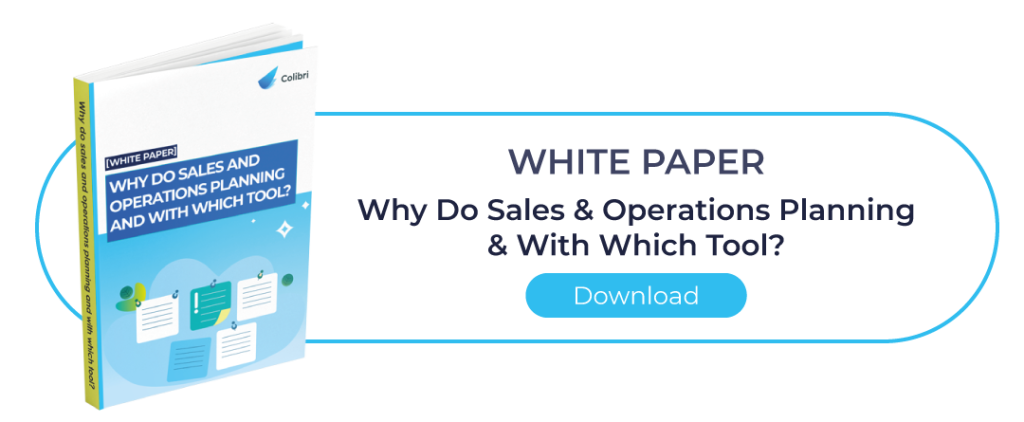Like all business processes requiring consistency and agility, Supply Chain as it exists today is the result of a long list of innovations. From Kanban (pull flow) to VMI, Vendors Management Inventory (push flow), modern Supply Chain has evolved according to fluctuating consumer and production needs, themselves influenced by the evolution of society. Let’s follow the path that led us to today’s innovative and really efficient approach.
From the limitations of Kanban to the dawn of today’s Supply Chain
Logistics from the 80’s to the 2000’s: simplicity
In the 1980s, logistics was quite fragmented: Sales and Production were sharing this task, with no dedicated department responsible for inventory and lead time management. At that time, logistics was limited to warehouse stock management without optimization.
But this decade also saw the emergence of the Kanban method. Like Lean or MRP, it allowed a reactive and organized system. It had the advantage of being very visual and simple to set up: colored labels were placed on boards to represent inventory and backlog in real time. As a matter of fact, the term “Kanban” means “label” in Japanese. It consisted more or less in organizing just-in-time supply, i.e. according to the needs. When properly dimensioned, Kanban can reduce overstocks or shortages as well as manage the flow speed, but it only works in a relatively stable environment.
Meeting offer complexity with Supply Chain
The concept of Supply Chain Management appeared with the increased complexity due to the changes in consumer behavior, the growing offer and ranges starting to widen and become more personalized.
In addition to this complexity, Supply Chain is undergoing intrinsic changes:
- E-commerce growth
- Increase in the number of suppliers to select from
- Production relocations or subcontracting to maximize profit, resulting in tight deadlines, increased disruption risk and multiplied flows and therefore inventories
The concept of Supply Chain Management, as it is now known, has evolved to be able to anticipate and produce what customers will want to buy.
According to this logic, the Kanban method has reached its limits to cover the needs of today’s Supply Chain. Everything has changed because of:
- Competition
- Globalization
- User behavior evolution
Logistics professionals (or those who have become logistics professionals) have had to move into a new dynamic of behavioral anticipation. This is when AI came into play.

Concepts that evolve with our consumption and production patterns
All the changes in logistics methodology have been the result of evolutions in buying habits, product ranges and global sourcing networks. However, the main challenge of the last 15 to 20 years has been to cope with ambiguous consumer behaviors. It’s ambiguous because they want to be able to buy local in local stores, while ordering from e-commerce websites and at the same time they want same day delivery, while feeling guilty about their carbon footprint.
To compensate for these uncertainties, companies decided to organize themselves to have as little stock as possible, and then developed methods (such as delayed differentiation) to promote agility and reactivity, thus adapting their planning to these evolving needs and increasingly short life cycles.
Nowadays, the forecasting approach is gaining ground:
- Companies need to anticipate production, procurement, purchasing by basing their strategies on market behavior projections
- The complexity of consumer behavior in an omnichannel setting with very wide ranges and very short shelf lives makes evaluation a complex task
- Technological innovation such as robotization, Artificial Intelligence and data science offer simulation capabilities unmatched by the human brain, while machine learning allows continuous improvement of the forecasting process.
On the other hand, when faced with that much power and possibilities offered by technology, there’s a risk of getting carried away. But for optimal performance, human intervention is necessary and the planner must still check consistency and make decisions.
This technological evolution can be divided into three distinct phases:
- BEFORE: the era was still one of Excel, Kanban, lean and MRP for simple sales cycles logistics. This was also the time of the rise and widespread use of ERP systems, which structured processes, requiring the user to adapt to the IT tool.
- TODAY: For the past few years, we have been digitalizing all processes, which now involve the widespread use of the Cloud (quick set up and collaborative tools accessible from anywhere). We are also witnessing the development of agility and user experience (scalable and user-centric tools for better efficiency, quick training, intuitive workflows).
We are still at the beginning of a wave of technological innovations that is moving fast but is still very fragmented (data science, AI, machine learning, robotization).
- TOMORROW: When all these new emerging technologies will be coordinated and put into interaction, they will offer a fabulous power to all those who will have access to them.
Innovations serving the majority: how Colibri is part of the useful innovation movement
For Colibri, innovation only makes sense if it is simple and shared by everyone. Indeed, the purpose and use of technologies are more important than the technologies themselves. They are only the vehicle for spreading methodologies and concepts, acting as a catalysts which may or may not accelerate their development, but do not represent an end in itself. Instead of looking for a technology at any price, companies should first analyzing their needs and which tools can really meet them.
When developing Colibri, we focused on these essential notions of consistency, intelligence, and usefulness for end users.
But for an innovation to be adopted by the majority, it must be understood, and therefore it must be SIMPLE!
For this reason, we work with the most advanced technologies designed to meet the real needs of our customers. As a matter of fact, the innovations we implement are often inspired and co-designed by our customers. How so? Because they know what they need and we know how to design solutions that are adapted, sustainable and scalable.
Innovate, yes, but usefully!
You want to know more about Colibri’s logistics tools and support? Please contact us!






